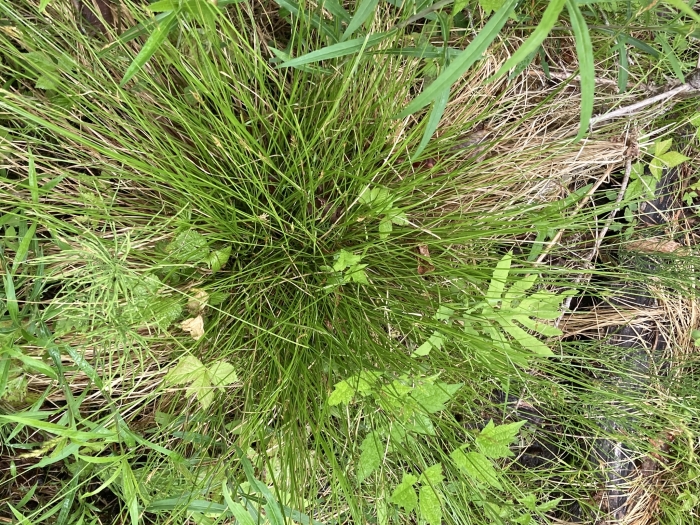Dewey’s Sedge
(Carex deweyana)
Dewey’s Sedge (Carex deweyana)
/
/

© er-birds
CC BY 4.0
Image By:
© er-birds
Recorded By:
Copyright:
CC BY 4.0
Copyright Notice:
Photo by: © er-birds | License Type: CC BY 4.0 | License URL: http://creativecommons.org/licenses/by/4.0/ | Uploader: er-birds | Publisher: iNaturalist |
























Estimated Native Range
Summary
Carex deweyana, commonly known as Dewey’s sedge or short-scale sedge, is a perennial herbaceous plant native to forest understories, meadows, and open woodlands of central and northern North America. It is also found in moist to dry conditions, often in association with trees. This sedge forms dense tufts with broad leaves that emerge from shorter stalks near the base. The flowering culms can reach up to 39 inches in length and tend to arch outward as the fruit matures. The plant is notable for its ability to host the smut fungus Anthracoidea deweyanae and is named after the American botanist Chester Dewey. It has been introduced to Great Britain where it continues to thrive in similar habitats.
Carex deweyana is valued for its adaptability to a range of soil moisture conditions, from dry to moist, making it a versatile choice for naturalistic plantings and restoration projects. It is also recommended for landscaping due to its ease of cultivation from wild seed. The plant’s dense growth habit makes it suitable for use as ground cover or in border plantings, and it can contribute to the biodiversity of garden ecosystems by supporting specialized fungi. In cultivation, it prefers partial shade to full sun exposure and can tolerate a variety of soil types, provided they have good drainage. While generally low-maintenance, it may require division every few years to maintain vigor.CC BY-SA 4.0
Carex deweyana is valued for its adaptability to a range of soil moisture conditions, from dry to moist, making it a versatile choice for naturalistic plantings and restoration projects. It is also recommended for landscaping due to its ease of cultivation from wild seed. The plant’s dense growth habit makes it suitable for use as ground cover or in border plantings, and it can contribute to the biodiversity of garden ecosystems by supporting specialized fungi. In cultivation, it prefers partial shade to full sun exposure and can tolerate a variety of soil types, provided they have good drainage. While generally low-maintenance, it may require division every few years to maintain vigor.CC BY-SA 4.0
Plant Description
- Plant Type: Grass
- Height: 1.5-2.5 feet
- Width: 1.5-2.5 feet
- Growth Rate: Moderate
- Flower Color: N/A
- Flowering Season: Spring, Summer
- Leaf Retention: Deciduous
Growth Requirements
- Sun: Part Shade, Full Shade
- Water: Medium
- Drainage: Medium
Common Uses
Bird Garden, Deer Resistant, Low Maintenance, Water Garden
Natural Habitat
Forest understories, meadows, and open woodlands
Other Names
Common Names: Dewey’s Sedge , Round-Fruit Short-Scale Sedge , Short-Scale Sedge
Scientific Names: Carex deweyana , Vignea deweyana
GBIF Accepted Name: